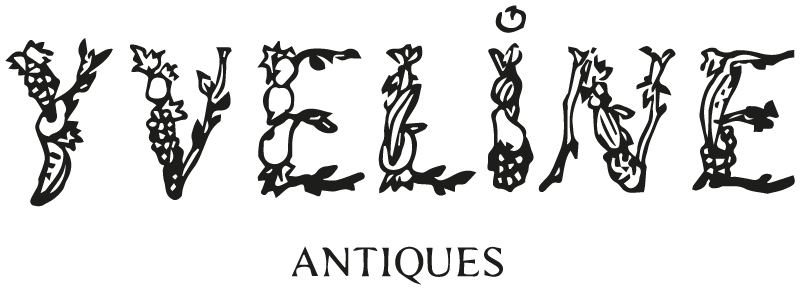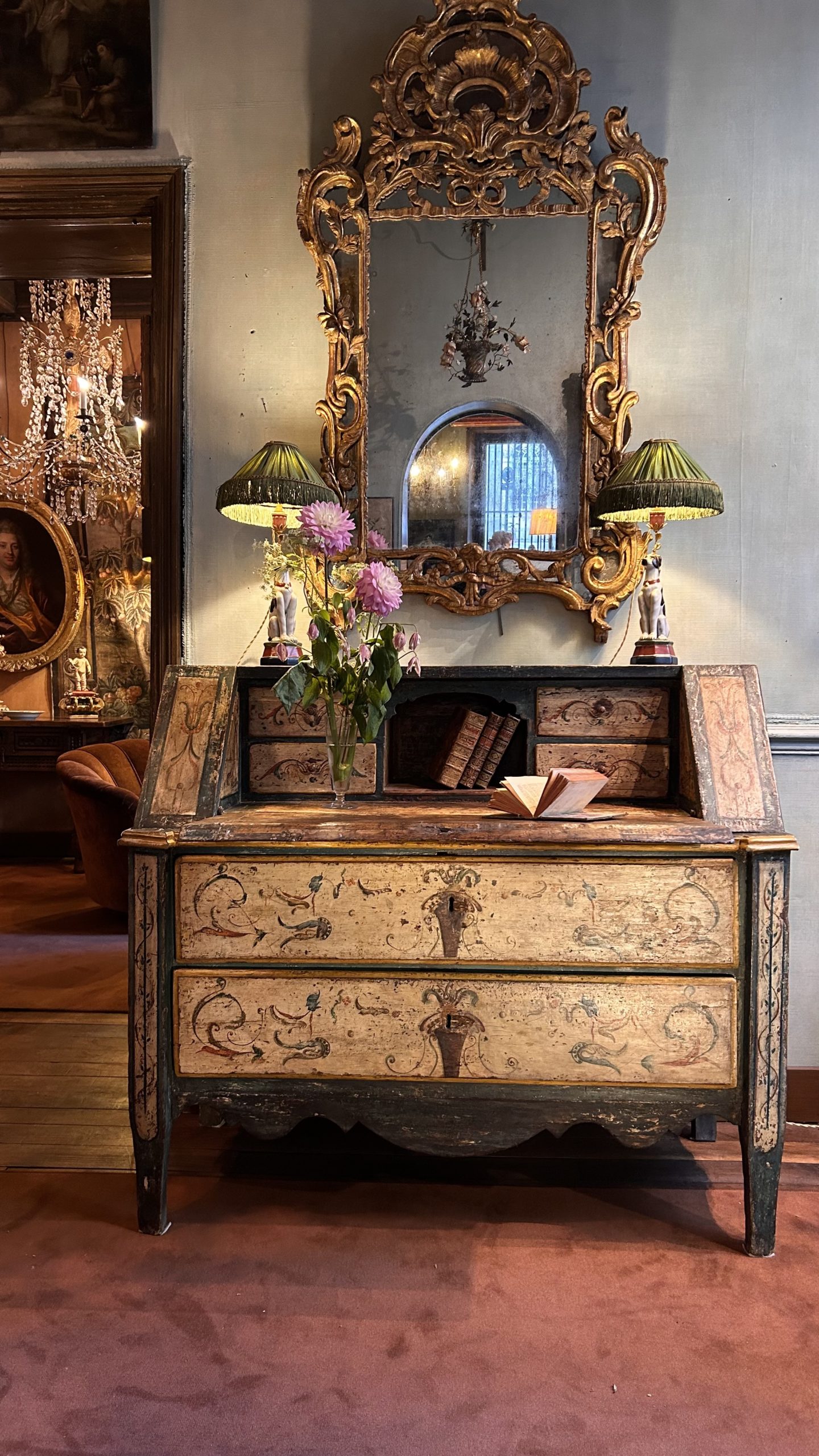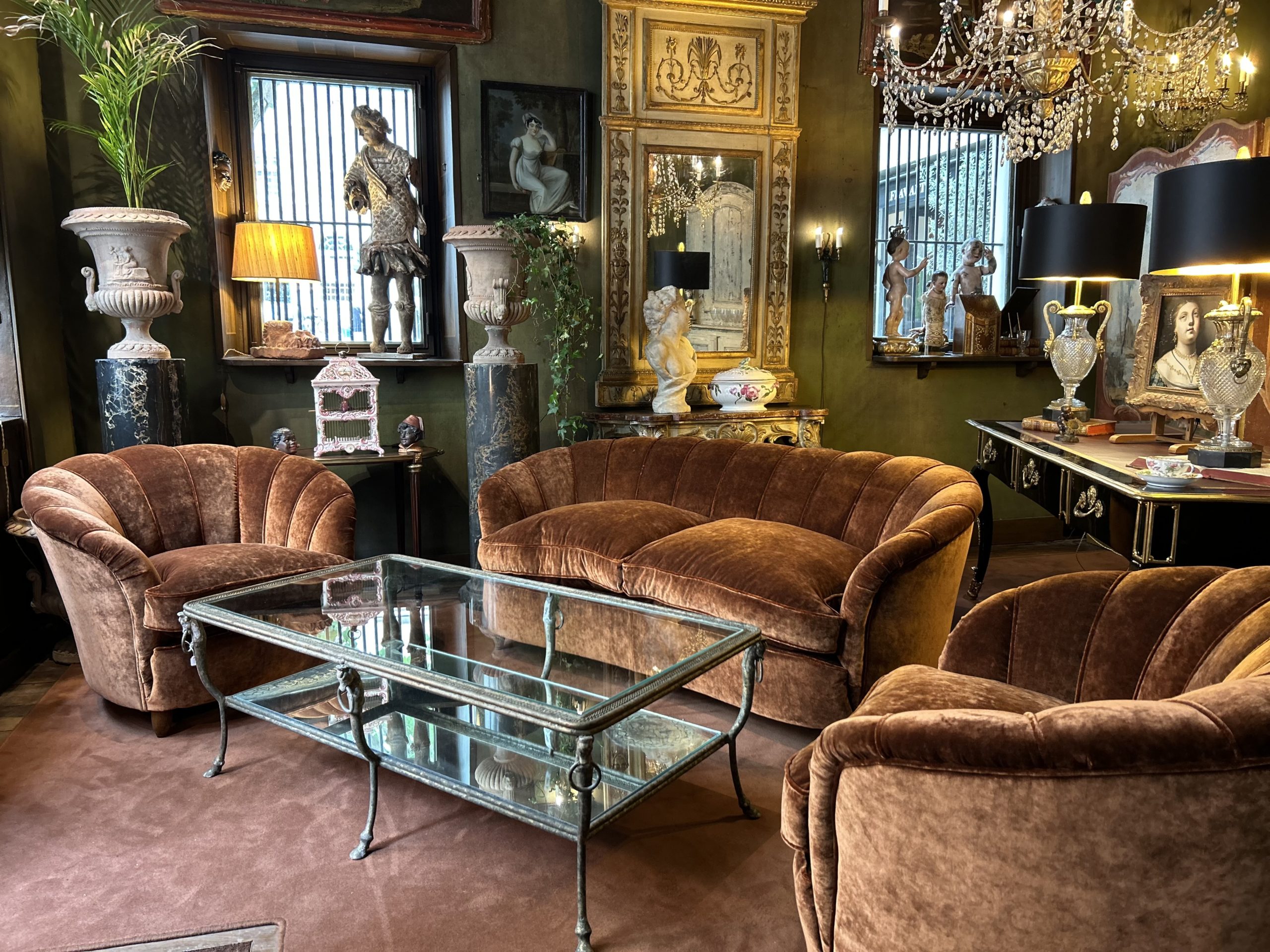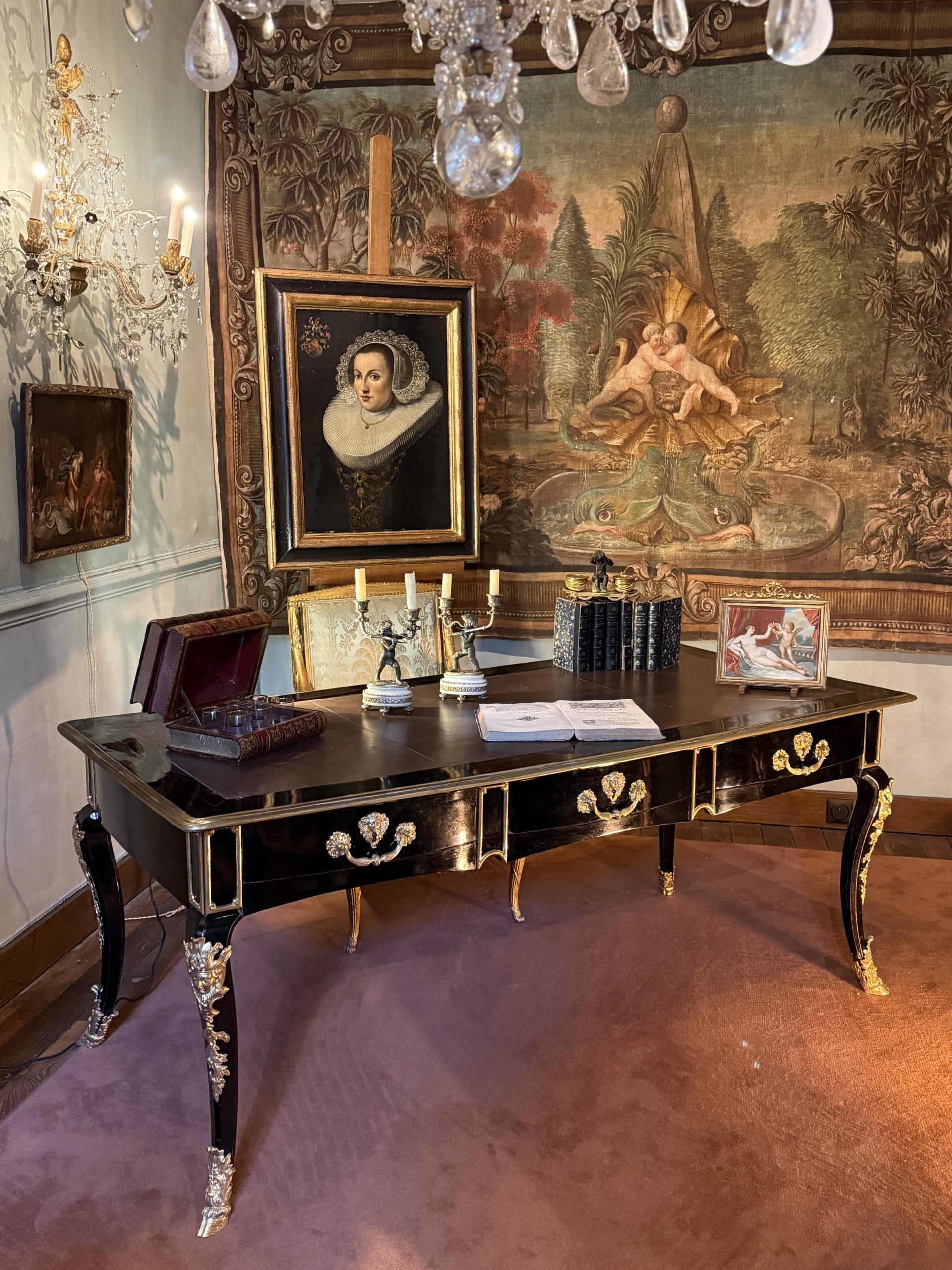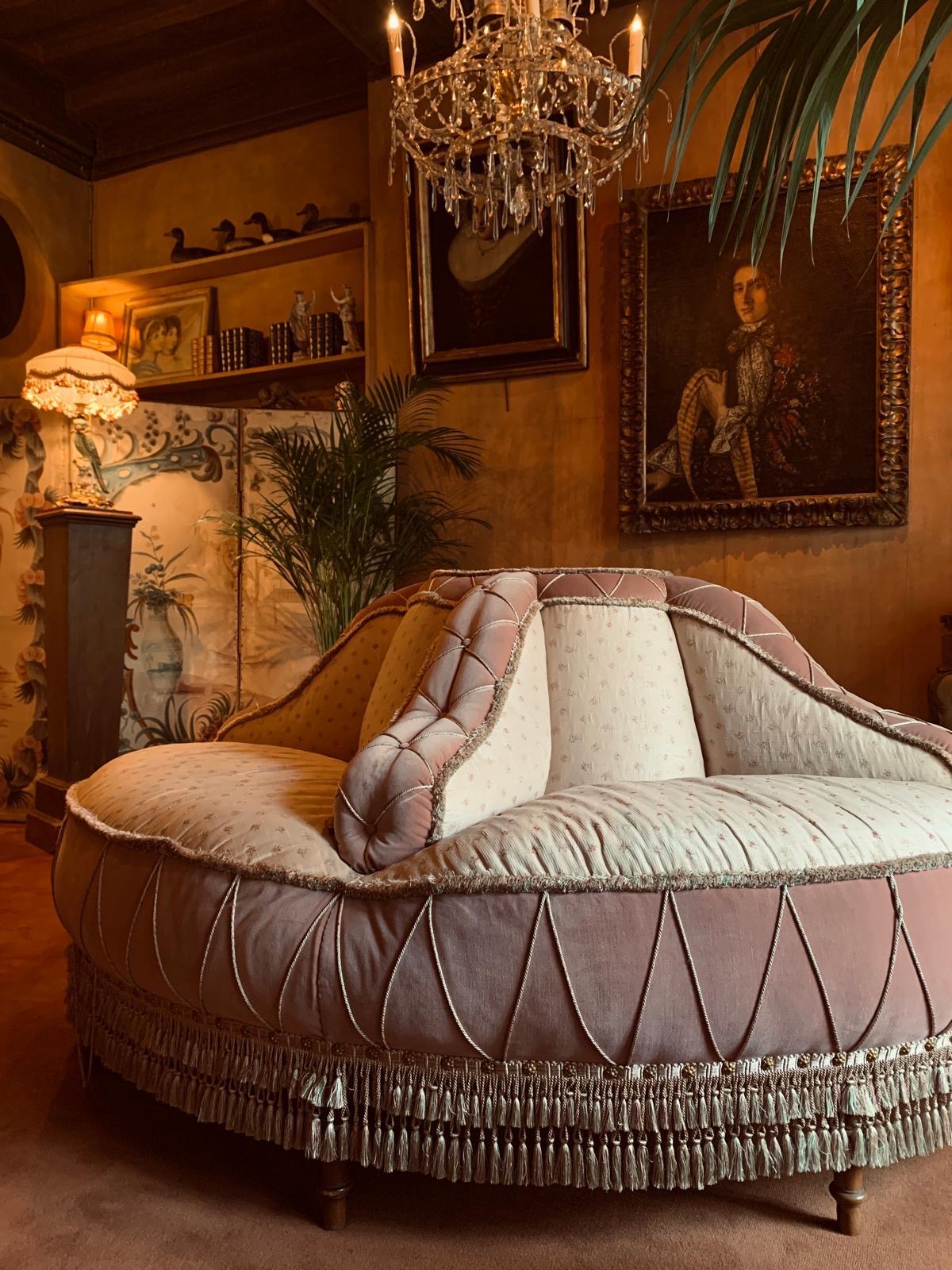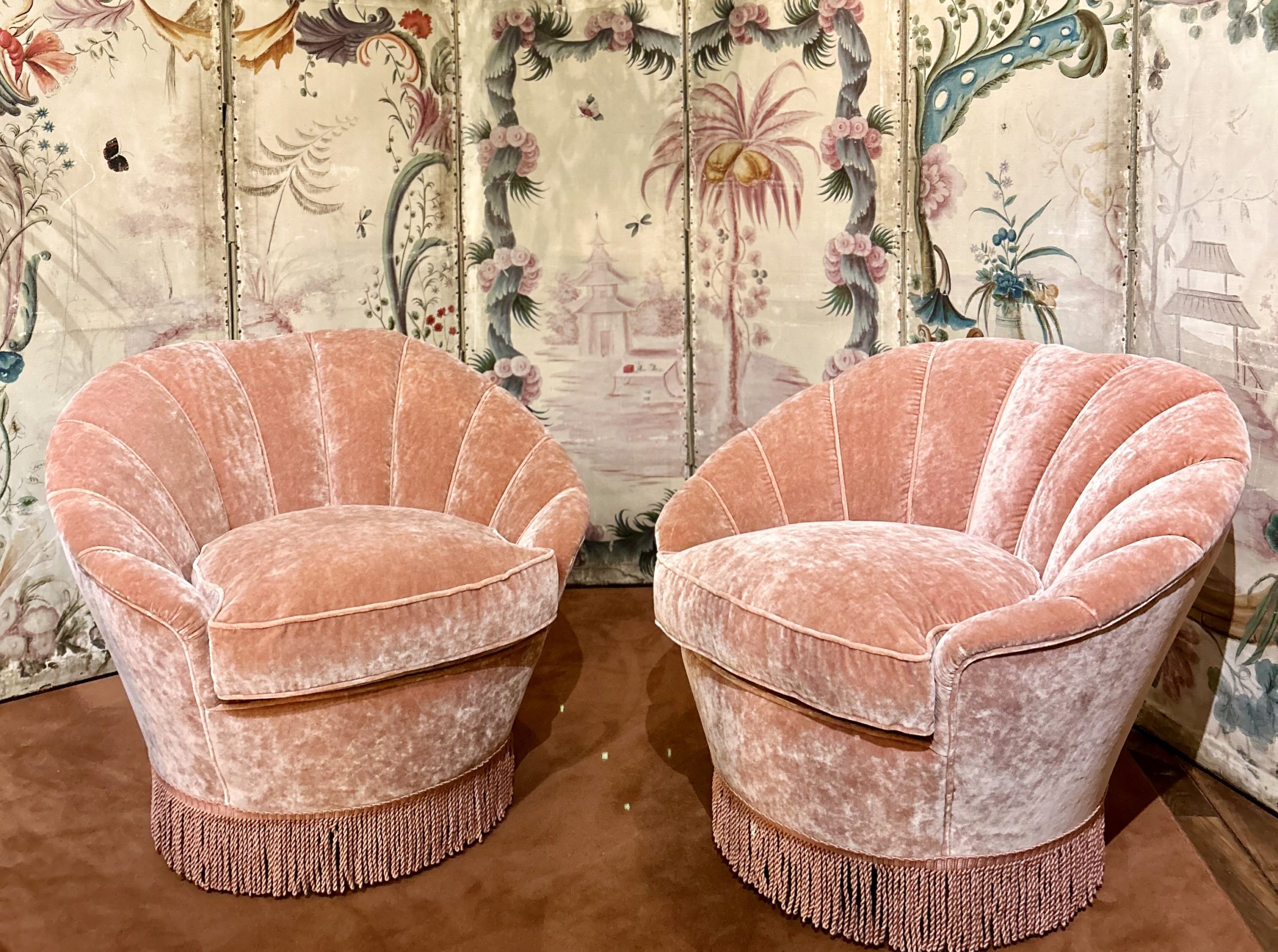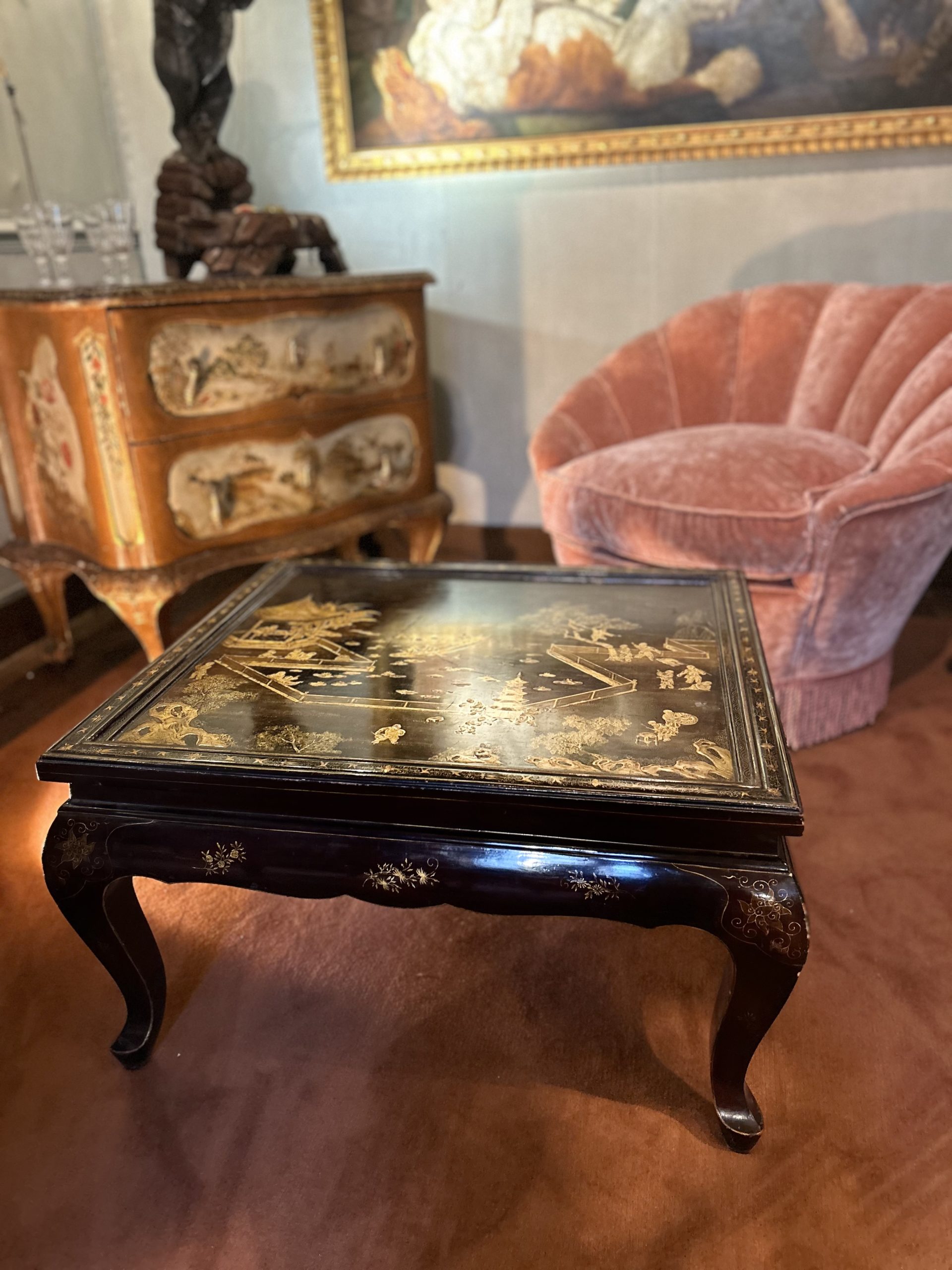A small “indiscreet” bollard consisting of a three-seater seat upholstered in animal hair in the traditional style, all on a network of twenty stiff springs… a triple backrest also separated by three padded, buttoned rails topped with a Medici vase in gilded wood, entirely covered in Rubelli jacquard fabric, with Declercq trimmings.
Napoleon III period, 19th century
Polychrome wooden writing desk with scroll and floral motifs, opening onto two drawers and a drop-leaf flap, four small interior drawers, and keys.
Italy
18th century
Large two-part writing desk comprising a writing surface, with walnut interior and storage compartments, and beautiful original bronze ornamentation. The writing surface features numerous drawers and a niche.
Holland
18th century
“Shell” lounge set consisting of a sofa and two armchairs newly upholstered in rust-colored golden velvet.
Circa 1950,
Italy
Large flat desk, all black lacquered sides opening with three drawers in a row. It rests on nicely curved legs enhanced with a decoration of bronzes with heads of figures and hooves, top covered in old brown leather surrounded by wood and an ingot mold.
Regency period, 18th century
France
Large six-leaf screen in painted canvas, panels decorated with a motif inspired by Chinoiserie, as was fashionable in the mid-18th century, reverse decorated with simple trompe l’oeil panels.
An “indiscreet” bollard upholstered in silk, velvet, and braid, and padded, all original.
French work, Napoleon III period, 19th century
Pair of shell armchairs in powder pink velvet with fringes, feather cushions.
Italy
1940s
Regency mahogany table which rests on three legs mounted on casters, offering both charm and practicality. Thanks to its ingenious system of removable extensions, it can easily be transformed into a spacious oval table or a pair of consoles, adapting to all your needs.
England
Early 19th century period
Lacquered coffee table decorated with a motif inspired by Chinoiserie.
The Napoleon 3 tables and pedestal tables are made of mahogany, amaranth or blackened pear wood. They can be round or oval with the scalloped or fiddled edge. Inlays of mother-of-pearl, horns or ivory are common, as are painted flower, fruit or Chinese motifs.
Napoleon III period, 19th century
France
